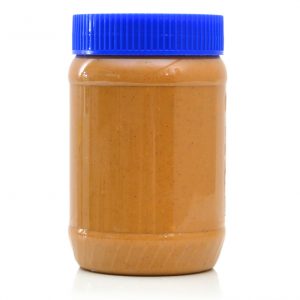 If you’ve ever melted butter for a recipe, you know that you have to constantly mix it to prevent the oil and water from separating. While this process may be acceptable for personal cooking or small projects, it is not practical for the mass production and storage of foods.
If you’ve ever melted butter for a recipe, you know that you have to constantly mix it to prevent the oil and water from separating. While this process may be acceptable for personal cooking or small projects, it is not practical for the mass production and storage of foods.
Fortunately, food manufacturers have many options for preventing separation. Natural surfactants are among the most reliable way to ensure that food stays well blended and appetizing on the shelf and beyond.
What are surfactants, and how are they actually used? Read on to learn more.
What Are Surfactants?
To understand surfactants, it helps to take a step back and look at why they are needed in the first place. Liquid ingredients have varying consistencies, viscosities, and specific gravities. They also have varying levels of surface tension. That surface tension, along with the chemical makeup of the ingredients, prevents many liquids from mixing. Separation naturally results in the heavier substance sinking, with the lighter floating on top — as happens when trying to melt butter.
Surfactants help to reduce that surface tension, acting as an emulsifier, allowing the ingredients to more easily homogenize without the physical pressure to separate. Surfactants help make certain types of food production possible, and it ensures that finished products and ingredients hold their emulsion during transport and storage. As such, surfactants have become an invaluable part of modern food manufacturing and are essential to safely stocking shelves around the world.
Types of Surfactants
Surfactants are a very large category that include several specific types, many of which are naturally derived. For example, lecithin occurs naturally in both plant and animal tissues, including eggs, and is widely regarded as one of the most common emulsifiers. Similarly, fatty acids and certain types of cholesterol are effective surfactants. Here is a sample of different types of surfactants:
- Alkyl glycoside
- Carrageenan (carbohydrate)
- Cholesterol
- Lanolin
- Lecithin
- Monoglyceride (fatty acid)
- Phytosterol
- Protein
- Tea saponin extract
Because surfactants are found throughout nature, there are countless options available. At PacMoore, we can help identify the perfect combination of surfactants to meet your food production goals.
What Food Items Include Surfactants?
Using a surfactant in food additives is nearly as common as the raw ingredients themselves. Below are just a few of the many everyday foods that include surfactants:
- Ice cream
- Peanut butter
- Baked goods
- Mayonnaise
- Salad dressings
- Chocolates
- Margarine
- Infant formula
- Processed meats
- Chewing gum
- Frozen deserts
Just as the surfactant applications are endless, so is the list of products that include them. The team at PacMoore can help our customers determine the proper ingredient formulation for your product line if your current emulsifier is not fitting the bill.
PacMoore Is a Leader in Surfactant Applications and Products
As common and useful as surfactants are, it pays to work with food manufacturers and handlers who know what they are doing. At PacMoore, we have a long history of offering the highest-level contract services in the industry. We deeply understand the surfactant world and are equipped to help you finalize your formulations as you move into production.
To learn more about the services we offer, or to learn more about surfactants in general, contact us today.